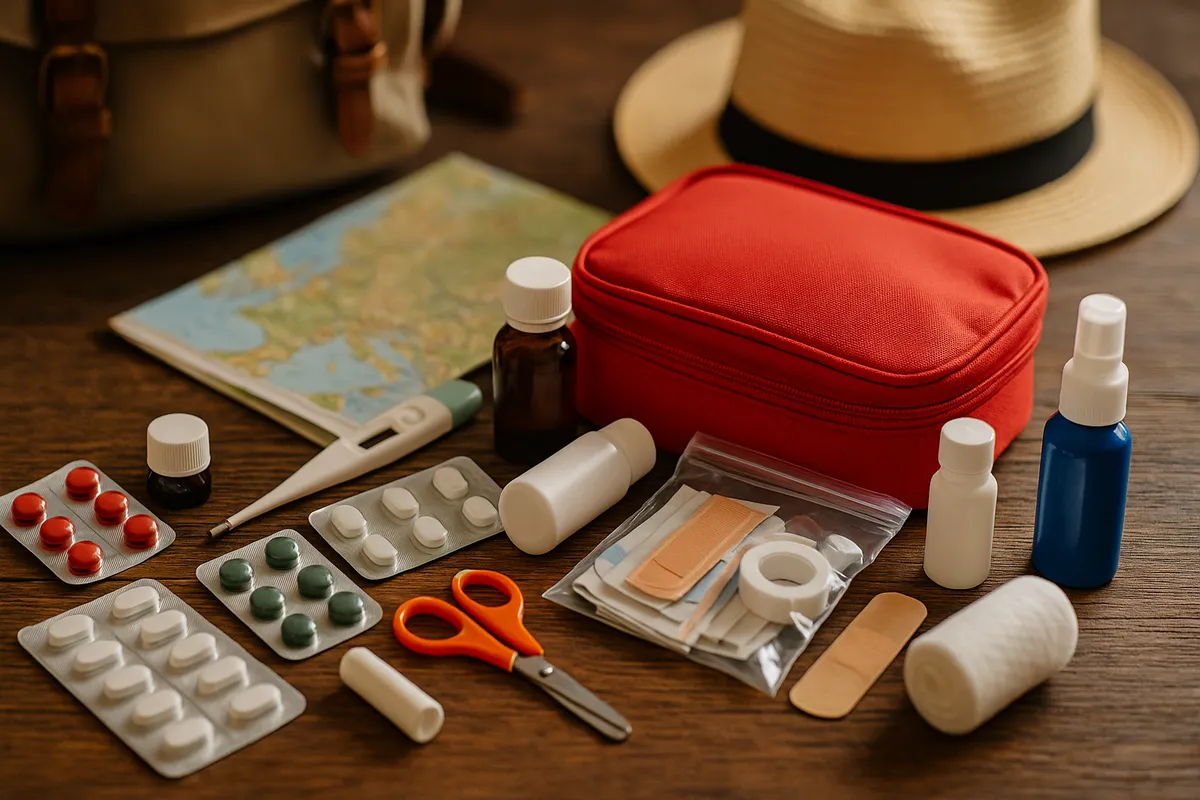Tips for preparing personal medical supplies when traveling
- Saturday, Jun 14, 2025, 09:57 (GMT+7)
Tips for preparing personal medical supplies when traveling
Every trip is an unpredictable adventure. No matter how well it is planned, no one can guarantee perfect health or a journey without setbacks. A scraped knee from slipping on rocky beaches, a sudden fever at night in the mountains, or even muscle aches after a long journey can easily disrupt a trip if you are unprepared. For experienced travelers, a personal medical kit is always an essential part of their luggage. However, not everyone knows how to pack it properly in a way that suits different travel conditions.
Knowing how to prepare a practical and well-thought-out medical kit not only helps prevent risks but also ensures peace of mind throughout the journey. There is no need to carry an entire pharmacy. What matters is being smart about what to bring and how to handle the most common scenarios effectively.
The first thing to consider when preparing your kit is your destination and how you are getting there. If you are traveling to a city, healthcare access is usually more convenient. But if the plan includes remote areas, mountainous regions, islands, or places with limited infrastructure, even minor health issues can become serious problems without proper supplies. Relying on local pharmacies might not be reliable as medications can vary in name, dosage, or even availability without a prescription.
A basic personal medical kit should include items grouped by purpose for easy access. The first group includes medications for digestive issues. These include remedies for stomach aches, diarrhea, indigestion, motion sickness, or food allergies. Digestive troubles are common due to sudden changes in diet or unfamiliar foods. Probiotic powders, anti-nausea pills, and small packs of oral rehydration salts are especially helpful.
The second group includes medications for fever, pain, or cold symptoms. One tablet of paracetamol can rescue a day of sightseeing if a headache or fever strikes due to sudden weather changes. Fever-reducing patches, throat lozenges, and saline spray are also good options, particularly in dry or polluted environments.
The third group includes basic first-aid supplies. Bandages, sterile gauze, antiseptic solution, small scissors, elastic wraps, and sports tape may seem small but are crucial. Blisters from walking long distances or minor cuts from outdoor activities are common. In several real cases, travelers were able to stabilize a sprained ankle with just a roll of sports tape before finding proper medical care.
There are also small items that many forget but that often prove essential. Tweezers to remove splinters, a compact digital thermometer, herbal balm or patches for shoulder and back pain after carrying heavy backpacks, mosquito repellent, and anti-itch cream should all be considered. For those heading to colder or more humid places, lip balm and hand cream help avoid cracked skin.
One useful and lesser-known tip is to store your supplies in a small waterproof zip bag. Divide items into mini-packs by category or function for easier handling. Removing pills from large boxes and labeling their functions will save space and make them easier to use. Adding simple handwritten notes explaining the use of each item can also help others assist in emergencies.
Checking expiration dates before your trip is a crucial but often overlooked step. Many travelers reuse old kits without realizing some medicines have expired, reducing effectiveness and potentially causing side effects. Those with chronic conditions or on daily medication should bring the full supply needed, plus extra for unexpected delays. Carrying a prescription or a doctor’s note can help prevent issues at airports or customs.
It is also smart to keep a list of nearby clinics or hospitals close to where you plan to stay. This can be saved on your phone, marked on maps, or printed in case of technical issues. Having this information in advance can save precious time and ease anxiety during medical emergencies.
People with specific health conditions such as allergies, blood pressure issues, asthma, or dehydration risks should be even more careful. Bringing a small blood pressure monitor, asthma spray, or electrolyte tablets can make a huge difference. Personal items such as prescription glasses, contact lens solution, eye drops, or dental care tools should not be forgotten either.
Apart from having the right supplies, basic first-aid knowledge is just as important. While not everyone needs full medical training, knowing how to react to common issues such as fever, dehydration, low blood sugar, or fainting can be lifesaving. Printing or downloading simple visual guides for emergency care can be a smart move. In health-related emergencies, the first few minutes often determine the outcome, and staying calm while applying the right actions is key.
Being well prepared means not only having the correct items but also knowing how to use them at the right time. A medical kit should not just sit at the bottom of your backpack. It should be accessible and ready to support your wellbeing anytime during your travels. While chasing new landscapes and experiences, health remains the most important foundation that cannot be replaced. A wise traveler is not only someone who explores the outer world but also someone who knows how to protect their inner balance.
Many readers may now recall moments of panic from forgetting motion sickness pills or searching for a bandage in an unfamiliar place. These are the reasons why even the smallest medical kit deserves a dedicated space in every suitcase. Preparing thoroughly so that you rarely need it but having it ready when something happens is the best way to ensure a trip starts with excitement and ends with complete satisfaction.

 CHECKIN.VN
CHECKIN.VN








Share on